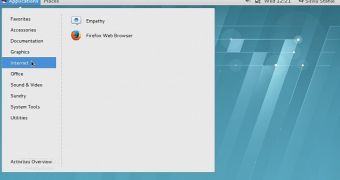Red Hat has announced the availability of Red Hat Enterprise Linux 7.0 for all customers and partners, marking the beginning of a new branch for one of the most used Linux operating systems in the world.
Red Hat Enterprise Linux 7.0 is based on Fedora 19, which is actually an interesting move from Red Hat. The 6.x version had quite an old-looking desktop, but the new one is more modern and actually much closer to what is being used today.
“Red Hat Enterprise Linux 7 not only lays the foundation for the open hybrid cloud and serves enterprise workloads across converged infrastructures, but it also pushes the operating system beyond today’s position as a commodity platform. Built to meet modern datacenter demands along with next-generation IT requirements, Red Hat Enterprise Linux 7 powers the spectrum of enterprise IT, from application containers to cloud services.”
“Bare metal servers, virtual machines, Infrastructure-as-a-Service (IaaS) and Platform-as-a-Service (PaaS) are converging to form a robust, powerful datacenter environment to meet constantly changing business needs,” reads the official announcement.
The developers have explained that Red Hat Enterprise Linux 7.0 is now using XFS as the default filesystem, which allows scaling up to 500 TB. Users will have access to Linux Containers, including Docker, across physical, virtual, and cloud deployments, and Cross-realm trust will ensure better secure access for Microsoft Active Directory users across Microsoft Windows and Red Hat Enterprise Linux domains.
Choosing a newer version of Fedora for Red Hat Enterprise Linux 7.0 was a very good decision for the company and it looks like it has been quite well received. The only problem is the rate of adoption and it remains to be seen how fast users will switch to the new system.
Red Hat has also said that the new operating system will be supported, as it was to be expected, by hands-on training and certification programs. This will ensure a smooth transition from one version to another.
We can only hope that Red Hat will not keep this branch in existence for the same amount of time and that the company will make the upgrade to the next release a little bit faster.
The complete release notes can be found in the official announcement. You can also review and purchase the Red Hat Enterprise Linux 7.0 distribution from Softpedia. Please keep in mind that this is not a free operating system.

 14 DAY TRIAL //
14 DAY TRIAL //